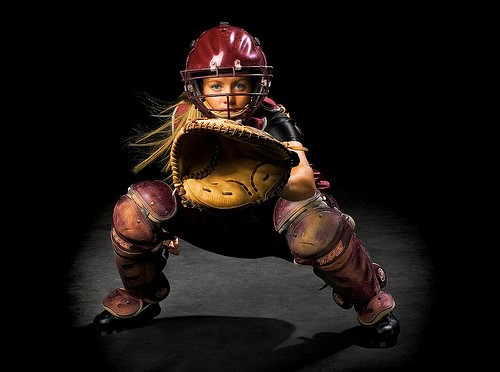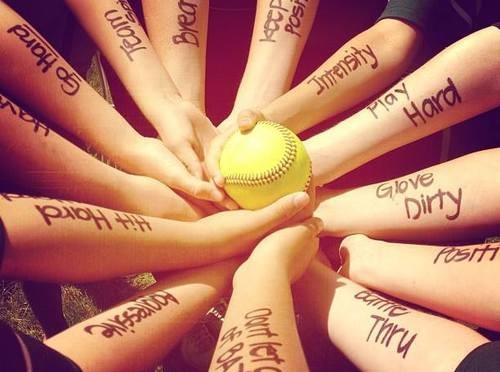How to Protect the Knees of a Catcher
The position of the catcher is one that arguably (I will argue that because I was a catcher myself) requires the least amount of movement during the game with the possible exception of the first baseman. The catcher will have to stand from time to time in throwing the ball to the bases, chase errant pitches that get behind them and cover home plate when a runner is coming in.
However, catchers are arguably the most likely to suffer from long term issues with their knees because of the excessive squatting that they must perform through most of the game. In fact, many doctors report that while softball injuries do not occur as often as many contact sports, the most frequent comes from catchers who have usually injured their knees over time.
The pain and discomfort are actually worse for teenagers who are still in the process of growing. In many cases, teenagers will often quit the position and find another on the softball field in order to avoid damaging their knees even more. However, once the damage has been done, many catchers have reported continual pain in their knees long after their playing days are over with.
So, the problem is just exactly how can a catcher protect their knees while still performing at a high level during the game? To answer that, it is important to fully understand what is happening and then taking the appropriate steps to ensure that any damage to the knees are minimal at best.
What Causes Pain in the Knees?
The causes for the pain are rather straightforward. The deep squatting actually pulls on the tendons and squishes the cartilage in the knees. Then, rising from that position to throw adds even more stress which starts to break down the cartilage and puts even more pressure on the tendons as well.
In some ways, it causes injuries similar to repetitive motion that leaves the knees weaker and more susceptible to injury. Quite often, a single event that causes a tendon or ligaments to snap was set up by the years of abuse caused by being in a prolonged squatting position.
If not corrected soon, catchers will also suffer muscle damage to the knees as well, leaving them in chronic pain which is only exacerbated when standing, walking or jogging. Many catchers have suffered from permanent damage to their knees which have crippled their mobility.
How Can Knee Problems Be Avoided?
However, despite the rather dire sounding issues that surround the knees of a catcher, there have been several advances in how to prevent these injuries from taking place. Prevention is the best form of knee protection since you avoid all the issues that can crop up in your future. The earlier you act to protect your knees, the less likely you will suffer an injury or have to endure long term pain.
What follows are some simple, yet effective ways to protect your knees while being the catcher of your team. The more you can do to protect your knees, the longer you can play without discomfort or putting your knees in jeopardy of being injured.
Knee-Savers: This is an interesting invention that is about as simple as it gets. A knee-saver is a little cushioned block that sits atop the back of the shin guards. This physically prevents the catcher from squatting fully down on their knees. The purpose is to increase the angle between the thigh and the knee which results in less stress being placed on the tendons, muscles and cartilage.
Currently, there are no long term studies that have been performed to know if knee-savers really work. However, simply increasing the angle of the knee from the thigh does offer some relief.
Stretches: This is the most traditional way to help avoid injuries to the knees. The purpose of the stretching is two-fold, to gain more flexibility so that the tendons and cartilage can be stretched further without injury and to strengthen the muscles in the knees as well. Interestingly enough, the best types of stretches are lunges and squats which will put the knee in a similar position, but not as much as the deep squatting that occurs during the game.
These types of stretches will help the tendons and muscles maintain their proper form and also loosen them up so that they are less susceptible to injury. In addition, it is recommended that catchers stretch after the game as well to help the muscles wind down.
Seek Immediate Treatment: As soon as any pain is felt or injury has occurred, it is best to seek out a physical therapist immediately. This is because the earlier the injury or pain can be addressed. The more likely a catcher will be to fully recover. At this point, a catcher should obtain a “patella-femoral brace” which will stability the kneecap and keep it properly aligned to help prevent further injury.
Plus, icing the area of pain can take down the swelling and also help in the recovery process as well by actually increasing the blood flow which accelerates the healing process as well.
Other Tips to Avoid Injury
In addition to knee-savers and stretches, catchers can employ a number of other methods to keep their knees healthier. Remember, it’s not just the time during the game that puts pressure on your knees, it also happens during practice as well.
During practice, keep a bucket of balls nearby so you don’t have to get up and chase them if the pitcher should fire one past you. Also, instead of squatting, sit on a small bucket, stool or cooler so that the pressure is off your knees. Limit the time you spend in the deep squatted position as much as possible during practice sessions.
In addition to your knees, keeping your hips, quadriceps and gluteus in shape will also take some pressure off of your knees. You’ll want to perform additional exercises away from practice that strengthens your core muscles and all of your leg muscles so that you have more overall strength and flexibility as well. This should also include your calves and hip flexors as well.
By taking a total approach, catchers can minimize the risk of long term damage to their knees with a combination of pre and post game stretches, exercises, knee-savers and limiting the time during practice of being in the deep squatted position.




